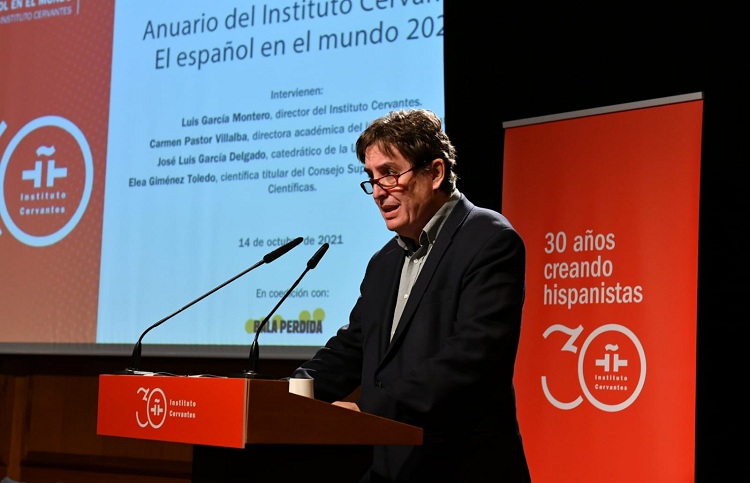The Diplomat
Nearly 600 million people use Spanish as a mother tongue or second language worldwide, 70% more than thirty years ago, when the Instituto Cervantes was launched.
These are some of the main conclusions of the Yearbook Spanish in the World 2021, presented yesterday at the Instituto Cervantes’ headquarters in Madrid as part of the celebrations marking the thirtieth anniversary of the founding of this Spanish cultural diplomacy organization.
“In these 30 years of the Institute’s operation, Spanish has grown by 70%,” said Cervantes director Luis García Montero, during the ceremony. The language, he continued, “enjoys good health”, as its figures show: “It is the native language of 493 million speakers (four million more than in 2020) and the group of potential users in the world exceeds 591 million (six million more than last year and 7.5% of the world population)” if one includes those with limited competence in Spanish and the 24 million students of Spanish as a foreign language, he explained.
At this time, the challenge of Cervantes is “to bet on the prestige of Spanish and its culture as ambassadors of the Spanish-speaking community”, because “our work is based on a pan-Hispanic conception in which Spaniards are only 8% of the speakers and one of our tasks is to act as a bridge between Europe and Latin America,” he said. Besides, he warned, “we have to take artificial intelligence and the language of machines seriously” and reinforce the presence of Spanish in science and technology”, because it is not only the language of great writers, but also of scientists. García Montero also took advantage of the event to defend the Government’s budget forecasts for 2022, because they would allow the new centers in Dakar, Los Angeles and Seoul to be set up.
The Yearbook
The Yearbook 2021 analyzes in depth, in its 800 pages, the international situation of the language, its evolution and its growth forecasts. This special edition, the 22nd, opens with a presentation by the King and an article by the President of the Government, Pedro Sánchez. Published jointly with Bala Perdida, the book contains – as has been the case since 2010 – the demolinguistic report El español: una lengua viva (Spanish: a living language), prepared by David Fernández Vítores and directed and coordinated by the Academic Directorate of the Instituto Cervantes, which provides extensive information on the 45 countries in which Cervantes is present.
Apart from the data already indicated, the 80-page report reveals that Spanish is the second mother tongue in the world in terms of number of speakers, after Mandarin Chinese, and the third language in terms of overall number of speakers (native proficiency, limited proficiency and students), after English and Mandarin Chinese. The number of Spanish speakers will continue to grow over the next five decades, although its relative weight will gradually decline by the end of the century. In 2060, the United States will be the second largest Spanish-speaking country in the world, after Mexico.
The document also reveals that more than 24 million students will be studying Spanish as a foreign language in 2021, that since 2010 the number of Spanish students counted by the Instituto Cervantes has doubled, and that Spanish is competing with French and Mandarin Chinese for second place in the ranking of the most studied languages as a second language.
Eighty-one percent of the world’s students of Spanish are divided between the United States, the European Union and Brazil. In the United States, Spanish is by far the most studied language at all levels of education. In the European Union, English is by far the most studied language, followed by French. However, Spanish competes with German for third place, and the proportion of Spanish students in primary and secondary education has risen steadily in recent years, while that of French and German has fallen. France, Italy and Germany are the European countries with the highest number of Spanish students. Likewise, in the United Kingdom, Brexit has consolidated the advance of Spanish.







